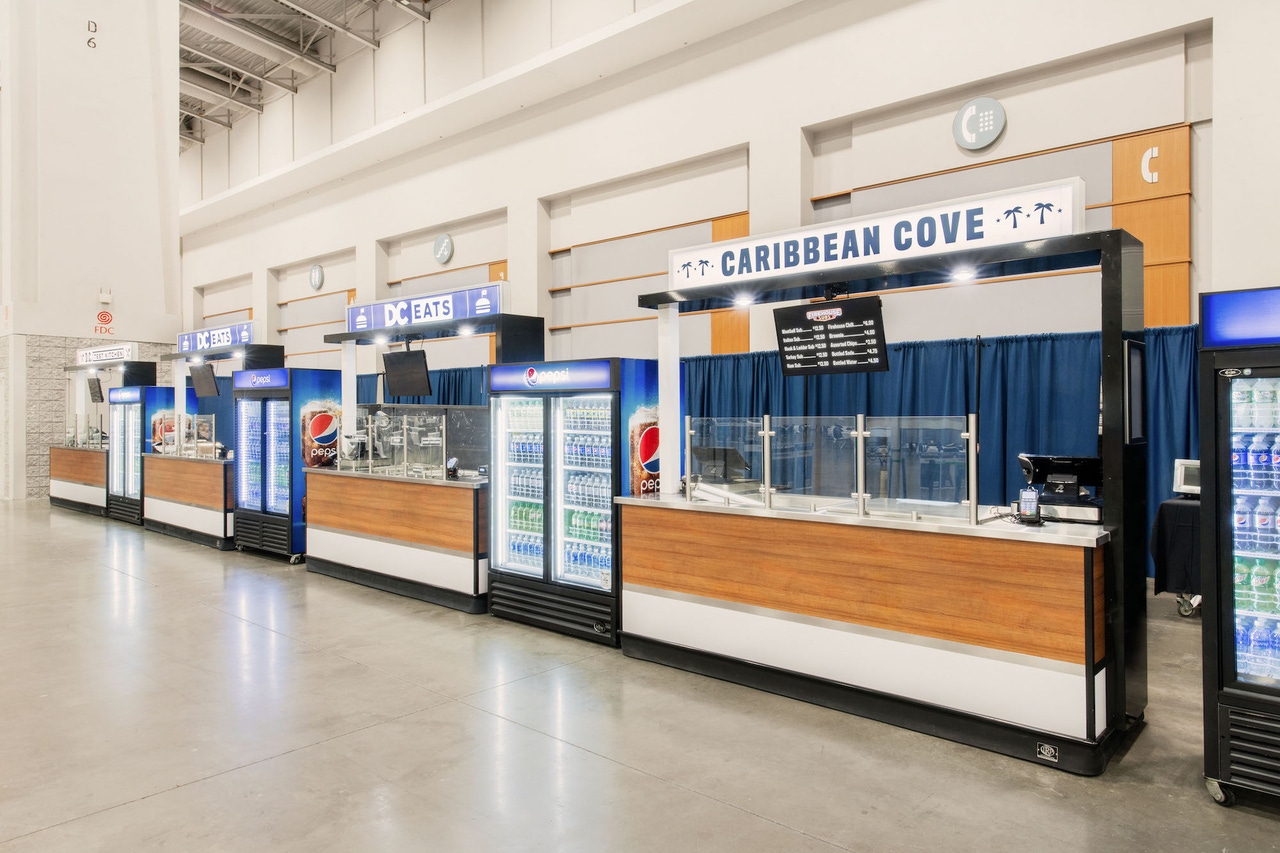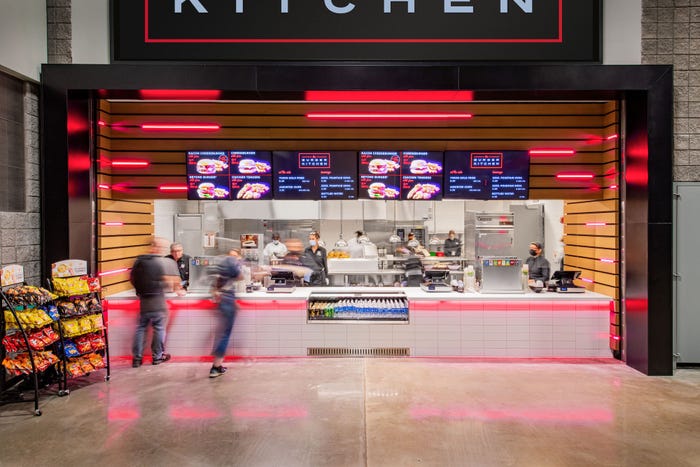Convention center renovations make flexible concessions—and other dining options—a cinchConvention center renovations make flexible concessions—and other dining options—a cinch
The Aramark team at the Walter E. Washington Convention Center in D.C. created service areas that accommodate a variety of concepts—from chicken tenders to catered cuisine.
March 14, 2023

When convention-goers hunt down food options in the Walter E. Washington Convention Center in Washington D.C., they find an abundance of choices that are, perhaps unbeknownst to them, curated for whatever specific event they happen to be attending.
If it’s a sports event, like the big volleyball tournament they hosted in February, fans find plenty of concession foods, like chicken tenders and burgers. As the audiences change — from a Comic Con crowd to a group of scientists from across the country — they switch the food options accordingly.
The dining options are flexible because the infrastructure is flexible. During a major, three-part renovation that began in 2019, when Aramark was awarded the food management contract to the huge 20-year-old venue, they installed a number of interchangeable food concept stations in the main convention area.
The stations are designed to run any of the six retail concepts that Aramark, the convention center’s food and beverage provider, runs during events. Each station has identical equipment: a fryer, an oven, a flat grill, a freezer and cooler space. “We installed all of the equipment knowing ahead of time what concepts we were going to do,” says Luis Sepulveda, head of food and beverage. The idea was “to make sure that…we have the right equipment for each.”

During the second phase of the renovations, they installed electronic menus, a flexible, adaptive option that allows the dining team to instantaneously change signage and menus to suit the concept and the event.
Their concepts cover a variety of favorites, evident in the concept names: Burger Kitchen, La Taverna, John Dough Pizza, TLC Chicken, Mi Comida, and Top Taco.
During the second phase of renovations, they installed electronic menus, another flexible, adaptive option that allows the dining team to instantaneously change signage and menus to suit the concept and the event.
The final, and most dramatic, phase transformed a previously hidden space on the second floor, one that was in very poor condition (it was inoperable for 20 years) and made it into an upscale dining locale they now call Downtown Dining.
“We did two things to change the flow,” Sepulveda explains. “One, we opened some windows so now you have a clear view to the exhibit hall downstairs. On top of that, we added stairs…from the main lobby.”
The concept upstairs is “like a giant food court.” Because they knew they’d be using the open space for receptions, all prep areas were designed to be action stations. Each front counter is an induction surface so staff can cook in full view of attendees.
It feels more like a club-level space than the concessions downstairs, though it’s open to anyone in the convention center. The space features a long bar, a soup and sandwich concept, a grill concept, and two flex concepts, all lined up on one side of the long space, opposite the windows. The other half of the room can be filled with tables and chairs for diners or made into other configurations, depending on the event.
Downtown Dining is put to full use during the RAMMY Awards Gala, the highly anticipated restaurant and foodservice awards show that draws 2,500 attendees every summer. In 2022, the second-floor dining area featured stations dedicated to 10 different cuisines, including Japanese, Korean, a carving station, and much more. “Our chef can be very creative,” Sepulveda says, noting that they change the offerings at the event every year.
The dining team has 340 employees. During especially big events, such as the volleyball tournament (it brought in 40,000 people), they also hire temps. At a really big event, there may be up to 800 dining employees working on site.
The team includes 25 managers who run a culinary team, a catering team, and a retail team. Sepulveda says he feels lucky to be part of a larger ecosystem; Events DC also runs another convention center in D.C. and one in Baltimore, which allows him greater access to expanded staffing when they need it. “We share a lot of resources, across locations, to be able to execute those big events. That makes a big difference for us. If I need five more managers for a specific event, I can get those managers locally.”
To supply food for one huge event after another, the Aramark team sources most of their ingredients through Sysco. They also have ongoing partnerships with a number of D.C.-based businesses, including Caribbean Cove DC, Ben’s Chili Bowl and Clements Bakery and purchase from six farms located in Pennsylvania and Maryland.
Though they cater to the crowds, there’s pressure to stay innovative. “Things have changed,” Sepulveda says. “Now everybody’s a foodie. The challenge is to stay unique and to deliver things people haven’t seen before.”
Read more about:
AramarkAbout the Author
You May Also Like





.jpg?width=300&auto=webp&quality=80&disable=upscale)
